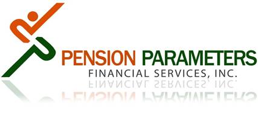MARKET UPDATE: FIRST QUARTER 2017
The market continued rolling right along in the 1st quarter as corporate earnings growth and the prospect of tax and regulation reform kept investors focused. For the quarter, the Dow Jones Industrial Average was up 4.6%, the S&P 500 added 5.5% and the Nasdaq Composite gained 9.8%. U.S. labor markets remained healthy as the unemployment rate held steady at 4.7% while core inflation has remained at around 2.2%. Consumer spending improved and remains a strong growth engine for the U.S. economy. Consumer confidence sits at its highest levels since 2001.Corporate profits have rebounded in part because oil prices have stabilized and energy companies are more profitable compared to a year ago.
The Federal Reserve hiked short-term interest rates following their meeting in March, its third quarter point hike as the Fed aims to normalize monetary policy as the economy improves. The Fed was reluctant to increase their economic growth forecasts on the political promises of future fiscal stimulus. Instead, the Fed chose to take a wait-and-see approach with their forward looking economic projections.
Globally central bank policy continued its divergence in the first quarter as the Fed raised rates while other major global central banks did not make significant changes to their accommodative monetary policies. Nevertheless, global economic activity has trended positive and the major indexes around the globe have registered significant improvement during the prior few months. Perhaps the biggest story within global equity markets was not the strength of the U.S. market, but the robust returns from foreign investments.
RETIREMENT ENHANCEMENT AND SAVINGS ACT
The Senate Committee on Finance has unanimously passed this bill and we can expect some of its provisions eventually to be passed into law. The Act would authorize open multiple employer plans (MEPs), promote lifetime income options, require beneficiaries to take distributions from inherited IRAs over a five-year period, increase penalties for failure to file plan returns up to a maximum of $50,000, extend the deadline for adopting a plan to the due date for the tax return for the year, and eliminate the rule that prohibits plan participants from making elective deferrals for six months after a hardship distribution among other provisions.
DEPARTMENT OF LABOR FIDUCIARY RULE
This rule, unveiled by the Department of Labor last spring, holds brokers and advisors who work with tax-advantaged qualified retirement plans to a fiduciary standard as opposed to the previous suitability standard. The implementation date was originally set for April 10, 2017. The Department of Labor has issued a 60 day implementation delay to reassess the fiduciary rule, as called for in a Feb. 3 directive from President Donald J. Trump, who told the agency to modify or repeal the regulation if it was projected to limit investors’ access to financial advice or cause an increase in litigation for firms.
HOW TO IMPROVE THE PARTICIPATION RATE IN YOUR 401 (K) PLAN
If you are frustrated by the low participation rate in your Company sponsored 401 (k) Plan, which might limit your own allowed contribution to the Plan, the following are a few suggestions you might consider to increase the participation rate in your Plan:
- Convert to a Safe Harbor 401 (k) Plan. This would involve your contributing a minimum 3% of salary for each eligible employee in the Plan or a match contribution of 100% of the first 3% of salary deferral and 50% of the next 2% of salary deferral. This would result in 100% participation and you and other high paid employees would be able to make the maximum contribution to the Plan.
- Consider changing the eligibility from the current 6 months or 1 year to 1 month. Since most of the money contributed to a 401 (k) Plan comes directly from the employees, this could potentially increase participation without much cost to the company.
- Studies have shown that 401 (k) Plans that match employee contributions have higher participation rates. For example, if you could match salary deferral contributions up to 6% by 50%, that would be an incentive for participants to contribute at least that much themselves.
- Automatic Enrollment has recently become more popular among employers concerned about participation rates in their 401 (k) Plans. This means that a new employee is automatically enrolled in the Plan after 1 month (or however long you decide) at, for example 3% of compensation, and then, if the employee decides not to participate, has to complete a form to opt out. These automatic contributions are typically invested in a retirement date mutual fund; that is, one targeted to the year of the employee’s normal retirement date.
You could decide to use one or a combination of the above suggestions to increase the participation rate in your 401 (k) Plan.
Contact Pension Parameters for further information on helping improve Plan participation
Phone: (212) 675-9360 OR (732) 583-1313
April 2017

